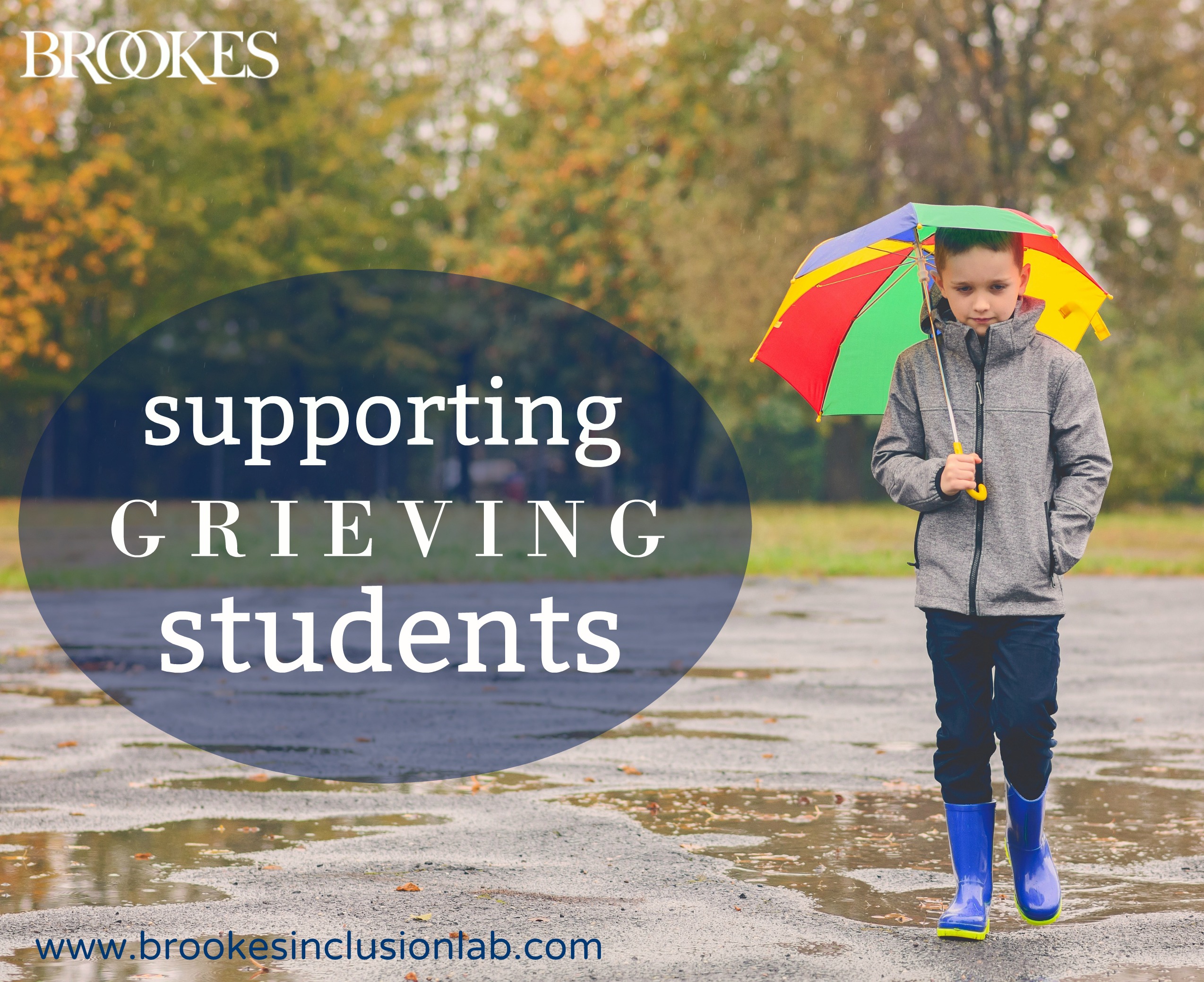5 Ways You Can Support Grieving Students This Year
August 28, 2018
Back-to-school is a challenging time for many children, but it can be an especially tough transition for grieving students. In today’s guest post, we’re featuring some practical ways to help, courtesy of school crisis expert David J. Schonfeld, MD. Coauthor of The Grieving Student and director of the National Center for School Crisis and Bereavement, Dr. Schonfeld is here today to share his best advice on how to reach out to grieving students early in the school year and give them appropriate support.
***
As summer break comes to an end, students return to school with a range of feelings and reactions. Some are excited to be back with their friends. They may be looking forward to the challenges of new academic work or to participating in sports, music, or art. Others are apprehensive about their upcoming classes, moving up to middle or high school, making new friends, and finding their way in a new class or school. Most children have a mixture of these feelings.
In all the activity of the year’s start, one group that can easily be overlooked is students who are grieving the loss of a parent, sibling, or other close family member or friend. Most education professionals would expect children with a recent loss to face some challenges in their academic focus. However, the ongoing experience of grief is often less recognized. Grief does not end at a fixed point, such as the end of a school year, or after a year or two has passed since the death.
As children grow and develop, normal transitions and changes in their lives will remind them of their loss. A boy in elementary school whose father died may miss him acutely years later as he enters puberty. A girl navigating the new social intricacies of high school may wish more than ever for the guidance and advice of her older sibling who died several years prior. As grieving children see peers enjoying support from families, they may feel their loss deeply, even years after the death occurred.
An Ideal Time to Make a Difference
The beginning of the school year is an ideal juncture for education professionals to remind themselves of steps that can help them recognize and support grieving students over time. Here are five specific steps you can take:
Help grieving students prepare for a transition to a new school or start of a new school year. If you’ve been working with a grieving student who is transitioning to a new school, ask the student and parents if they would like you to notify the new school of the circumstances. Often, this creates a safer and more welcoming setting for the student. Families may appreciate being relieved of the need to contact the new school about the student’s situation, and students may prefer not having the burden of telling their story to a new set of school professionals. If the student is still in your school but no longer in your class, reach out informally and let the student know you are still around and care. Children who have lost someone close to them will appreciate knowing that you are still there for them.
If you learn that one of your new students has experienced a death, reach out early in the year. Acknowledge that this can sometimes create challenges for students and let the student know you’re available to talk, or listen, if any concerns arise.
Talk with your class about death and grief. Literature, art, history, and other subjects and activities often have death as a theme. This may be hard for children who have experienced the death of a close family member or friend. Teachers should presume there may be students who have experienced a close personal loss in their class and approach the topic with sensitivity, even if they haven’t been told so. Children and their parents/guardians may decide not to notify the school after a death, or they may not recognize the help you may be able to provide if you learn about a loss in the past. Reach out to children you already know have experienced a loss and offer to talk with them–and, if necessary, to adjust a lesson or activity. Talk about losses that have impacted the school and broader community. Include practical suggestions about how to help someone who is grieving. Such lessons and discussions also help peers understand how to offer appropriate support to grieving students.
Offer options for activities. Many students do not have a parent to turn to for family-based classroom or homework activities. A classroom activity to prepare a Mother’s Day poem can be especially hard for children whose mother is not alive or currently living with them. This may be due to death, divorce, military deployment, incarceration, or other reasons. A teacher may prepare students for this activity by saying: “Some of you may not have a mother who is alive or currently living with you. You can still do this activity thinking about your memories of your mother, or select another woman in your life who has been helpful.” This may also be true for homework assignments, such as an activity related to puberty where students are instructed to talk with their parent of the same gender and write down the answers to questions.
Support high school juniors and seniors in their college and career aspirations. After a death, teens may hesitate to move forward with plans to go to college, join the military, or attend a trade school. They may feel the family needs them nearby. Sometimes they are expected to contribute financially to the family. While there is no single “correct” solution in these situations, the support of a trusted teacher or other school professional who can listen to a student’s concerns can be invaluable.
When educators make the effort to be available to grieving students in these ways, they have the opportunity to experience some of the most rewarding moments within their profession.
***
Many thanks to Dr. Schonfeld for sharing his wisdom on supporting students who experience grief and loss. For more practical guidance on this topic:
- Explore the book The Grieving Student: A Teacher’s Guide, by David Schonfeld and Marcia Quackenbush
- View Dr. Schonfeld’s edWeb webinar, Supporting the Grieving Student




Write a Comment
Your email address will not be published. Required fields are marked *
Post a Comment